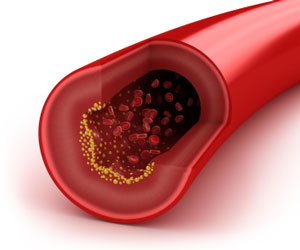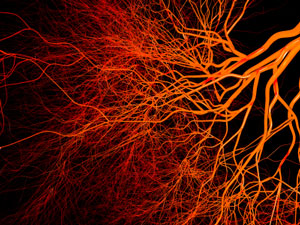How Does Alpha Lipoic Acid Work to Protect the Heart and Circulatory System?
Inflammatory conditions and diseases, such as diabetes, have unhealthy effects in blood and blood vessel cells that affect heart health, including in the: (iv.80-81, 92)
- Endothelium — the membrane that lines blood vessels and surrounds the heart (as well as other areas of the body).
- Platelets — a type of small blood cells that are important to stop wounds from bleeding and for healing.
Powerful, Multi-Pronged Protection
Alpha lipoic acid has antioxidant and anti-inflammatory properties that could help prevent or treat cardiovascular disease. Besides these effects, alpha lipoic acid stimulates or suppresses activities of various cells and molecules involved in heart and blood vessel function. These include: (iv.2, 66, 89)
| Alpha Lipoic Acid Activity | Why is this Important? |
|---|---|
Platelet effects:
|

Could help prevent atherosclerosis by plaque build-up and clogged arteries. (iv.91-92) |
|
Nitrogen effects: |
Low levels of NO contribute to high blood pressure, but the type of NO generated by inflammation can be harmful. (iv.88) |
|
Suppresses pro-inflammatory proteins (e.g., cell adhesion molecules and transcription factors such as NF-κB that activate pro-inflammatory genes). (iv.13, 91, 93) |
Inflammation in blood vessels promotes plaques and atherosclerosis. Adhesion molecules promote T-cells sticking to blood vessel walls. Anti-inflammatory alpha lipoic acid could help prevent or reduce plaque build-up. (iv.91) |
|
Inhibits inflammatory immune system response to plaque in arteries (such as increased levels of T-cells). (iv.91) |
Immune system cells infiltrate lesions in arteries due to plaque. Too many of them can cause inflammation and promote atherosclerosis. (iv.91) |
|
Boosts levels of natural antioxidants (e.g., glutathione and manganese superoxide dismutase). (iv.93) |
Reducing damage from free radicals in the liver may also help prevent the development of diabetes and obesity, both risk factors for heart disease. (iv.64) |
|
Reduces ADMA levels. (iv.95) The following conditions are associated with high ADMA levels: (iv.95)
|
Asymmetric dimethylarginine (ADMA) is a molecule similar to the amino acid arginine, and is normally found in blood plasma. However, abnormally high levels of ADMA are thought to interfere with how well blood vessels function. (iv.95) |
|
Aldehyde and calcium channel effects:
Conditions such as toxic levels of alcohol or a stroke can produce excess aldehydes and disrupt how well blood vessels work. (iv.93, 96-97) |
|
|
AMPK activities:
AMPK is an important enzyme involved in cell energy and metabolism. (iv.3, 99) |
Could help prevent atherosclerosis and heart disease associated with metabolic syndrome and obesity (especially belly fat). (iv.99) |
|
Effects on PPAR:
PPARs are proteins that regulate genes involved in metabolism and transportation of fat, proteins, and glucose. Adiponectin activates PPAR-α and is involved in regulating glucose levels. (iv.65-66, 99) |
Drugs used to lower triglycerides also activate PPAR-γ. (iv.64-65, 101) |
|
Blocks lipid accumulation in arteries. (iv.91) |
Inhibits plaque formation and atherosclerosis. (iv.91) |
|
Promotes reaction to acetylcholine and insulin by blood vessels. (iv.91) |
Helps relaxation and dilation of blood vessels, which can help with hypertension. (iv.91) |
|
Decreases angiotensin Type 1 receptors. (iv.91) Angiotensin hormones are crucial to regulating internal and external cell signals in many organs and blood vessels, including the heart, brain, and kidneys. In the heart and blood vessels, acute stimulation of angiotensin II molecules helps the muscles and cells contract. (iv.102) Chronic stimulation, however, promotes inflammation, disease (such as high blood pressure and atherosclerosis), and damage to both the heart and kidneys. Angiotensin converting enzyme (ACE) converts angiotensin I hormones to angiotensin II. Over-production and activation of receptors in heart and kidney cells for angiotensin I are important steps in developing unhealthy levels of angiotensin II. (iv.102) |
ACE inhibitors and angiotensin receptor blockers are used to treat heart conditions such as high blood pressure. They work by: (iv.51, 91)
Alpha lipoic acid works similarly to angiotensin receptor blockers. (iv.91) |
|
Cholesterol effects: |
|
|
Reduces levels of AGEs. (iv.56) |
High blood sugar increases levels of advanced glycation end-products (AGEs). They are linked to increased risk of diabetic complications (including heart disease). (iv.57-58) |
|

Alpha Lipoic Acid May Protect Your Heart and Arteries from Toxins
Chronic exposure to low levels of lead and mercury is linked to higher risk for cardiovascular diseases, such as: (iv.103)
- Atherosclerosis (mercury)
- Heart attack (mercury)
- High blood pressure (lead and mercury)
Both heavy metals cause free radical damage to the cells in arteries, and lead damages smooth muscle cells. Studies show that alpha lipoic acid can help reduce the toxic effects of exposure to lead. Some research indicates it may also be effective against mercury, but other studies indicate alpha lipoic acid doesn't reduce mercury levels in blood. (iv.103-104)
Animal studies suggest alpha lipoic acid can also help protect the heart from the toxic side effects of the chemotherapy drug doxorubicin. In addition, alpha lipoic acid's direct antioxidant and metal chelating properties also seem to enhance the drug's antitumor effects. (iv.105)
Recommended Dosage for Heart Disease
Doctors who practice integrative medicine recommend the following:
| Cardiovascular Condition | Dosages and Combinations |
|---|---|
|
Atherosclerosis |
20-50 mg/day along with 400-800 mg/day of vitamin E and 500 mg/day of vitamin C for its antioxidant effects (scavenging free radicals and stimulating/rescuing other antioxidants). (iv.106) |
|
Hypertension |
100-200 mg/day of R-lipoic acid with 2-4 mg/day biotin (this prevents any depletion of biotin that may happen with long-term alpha lipoic acid use). (iv.88) |

Results of clinical trials using higher doses of alpha lipoic acid have shown benefit in patients who already have heart disease or are at increased risk of it. People with atherosclerosis may also have reduced levels of alpha lipoic acid. (iv.51, 70, 89)


